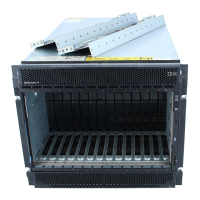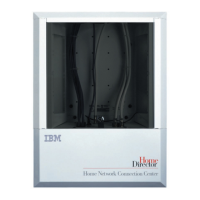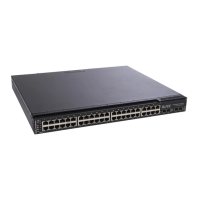To configure IGMP Snooping, change the Switch IGMP Snooping drop-down menu
to Enabled. Adjust the Querier State field to the appropriate choice among
Non-Querier, V1-Querier, and V2-Querier to determine the version of IGMP that is
used in your network. You can enter a value between 1 and 255 for the
Robustness Variable (default is 2). You can set the Query Interval between 1 and
65500 seconds (default is 125 seconds). This sets the time between IGMP queries.
The Max Responses enables a setting between 1 and 25 seconds (default is 10)
and specifies the maximum available amount of time before sending a response
report. The Age Out timer is fixed at 260 seconds. Click Apply to make the
settings effective.
The user-changeable parameters are as follows:
Switch IGMP Snooping: <Disabled>
This drop-down menu can be used to enable or disable IGMP Snooping,
globally, on the switch.
Querier State: <Non-Querier>
This drop-down menu can be set to Non-Querier, V1-Querier,or
V2-Querier. This is used to specify the IGMP version (1 or 2) that will be
used by the IGMP interface when making queries.
Robustness Variable: [2]
A tuning variable for sub-networks that are expected to lose a large number
of packets. You can enter a value between 1 and 255, with larger values
being specified for sub-networks that are expected to lose larger numbers
of packets.
Query Interval: [125]
Specifies the length of time between sending IGMP queries. You can enter
a value between 1 and 65500 seconds, with a default of 125 seconds.
Max Responses: [10]
Sets the maximum available amount of time before sending an IGMP
response report. You can enter a value between 1 and 25 seconds, with a
default of 10 seconds.
IEEE 802.1q Multicast Setting
To edit the IEEE 802.1q multicast settings, highlight IEEE 802.1q Multicast Setting
on the Multicasting menu to access the following window:
46 IBM BladeCenter 4-Port Gb Ethernet Switch Module: Installation and User’s Guide
